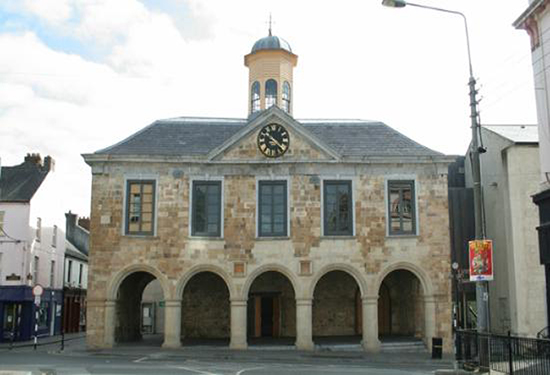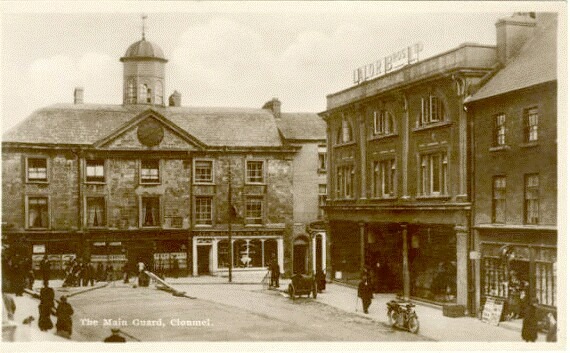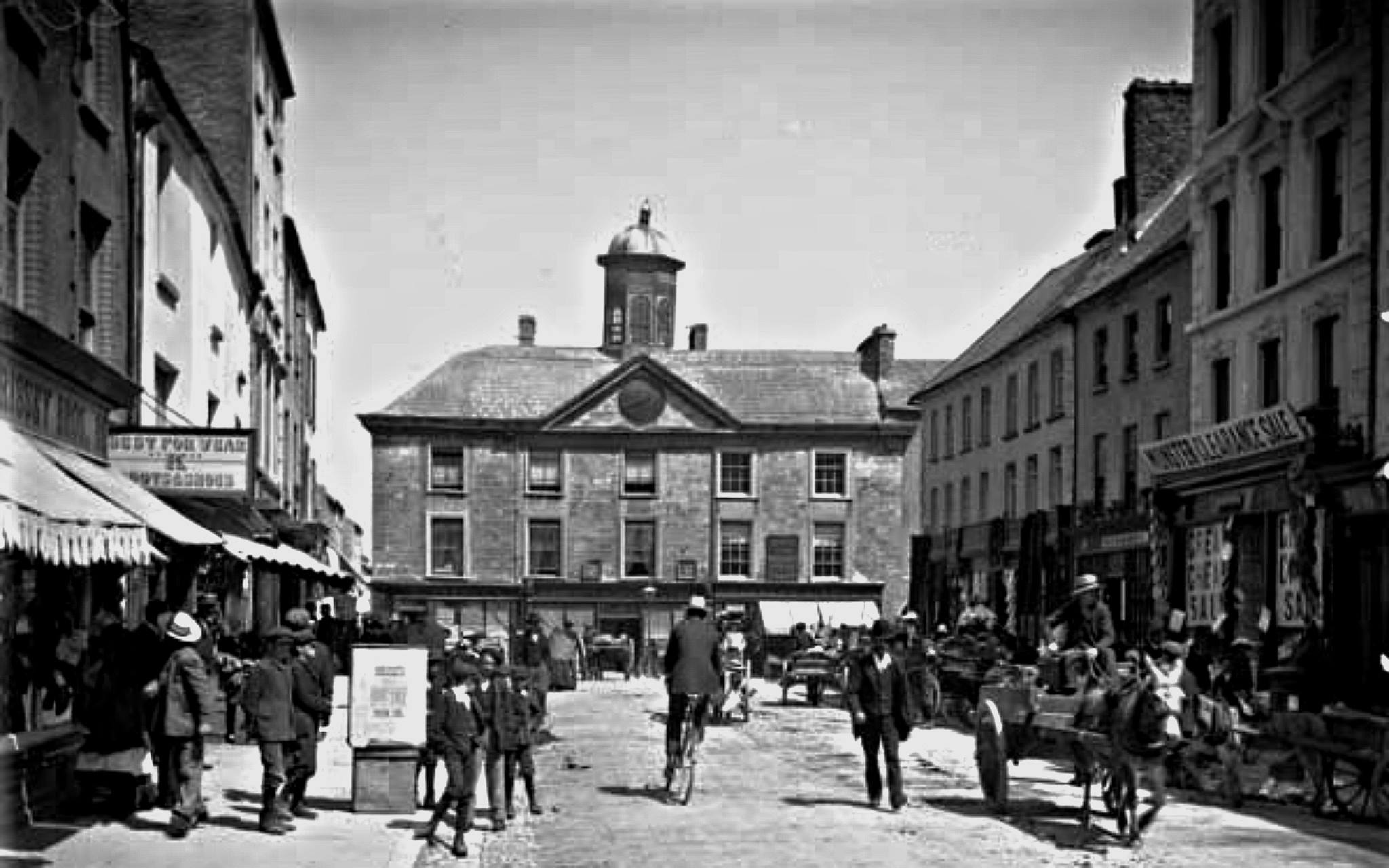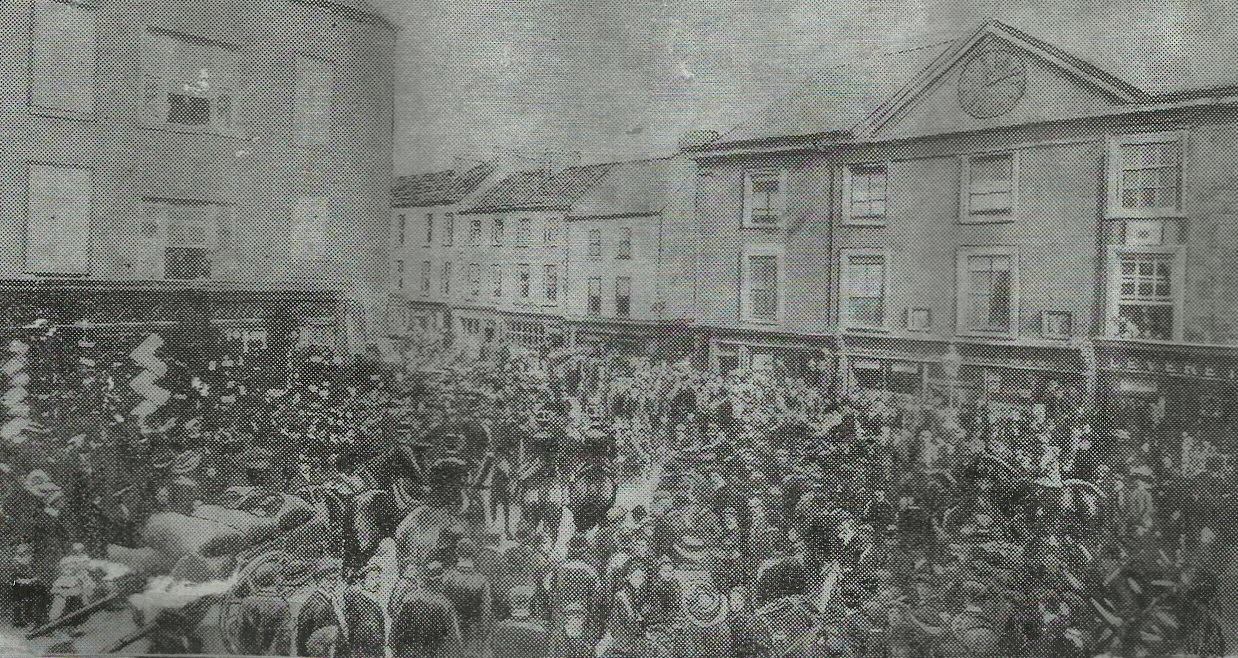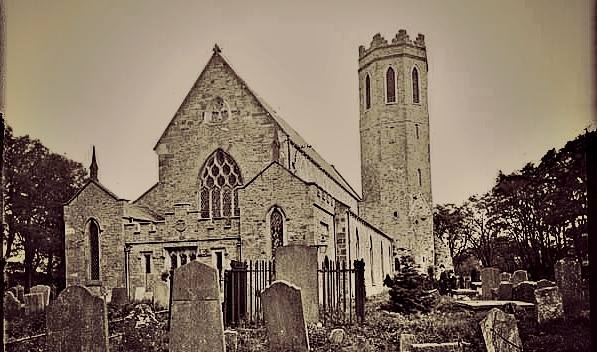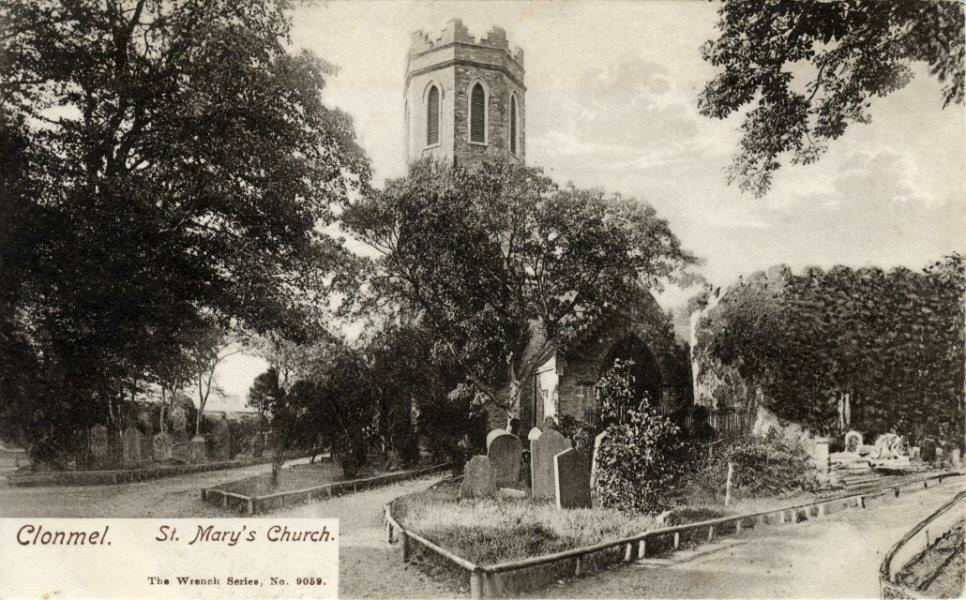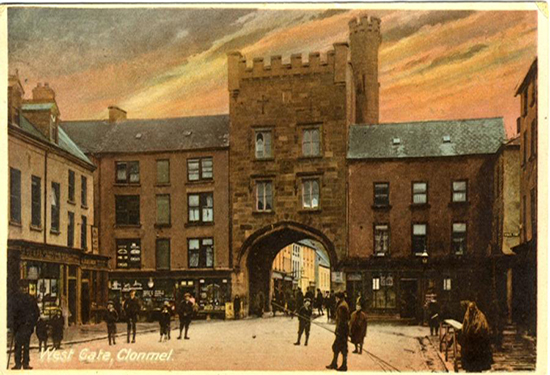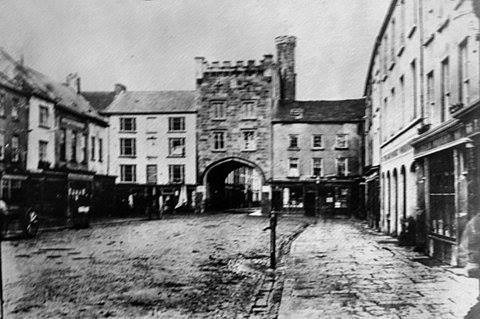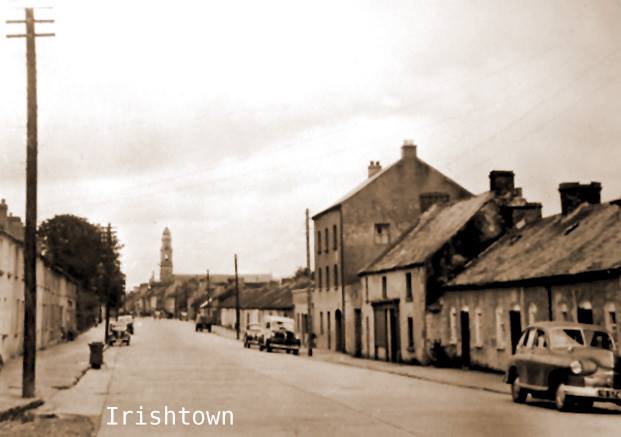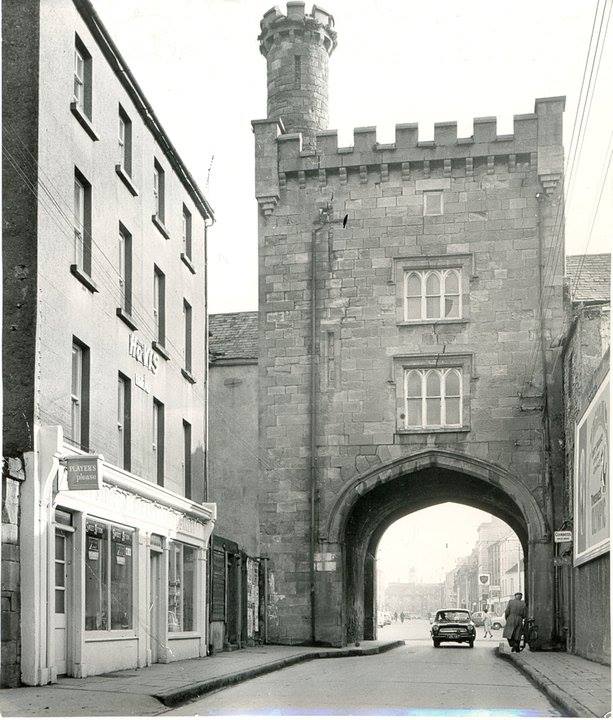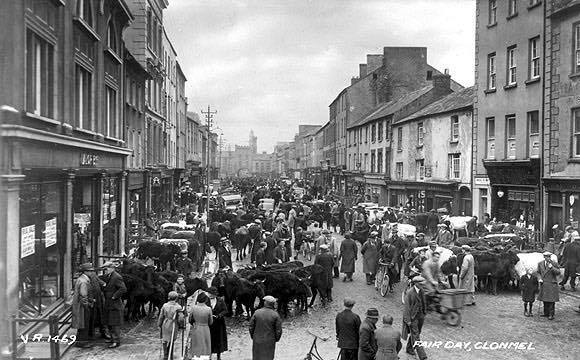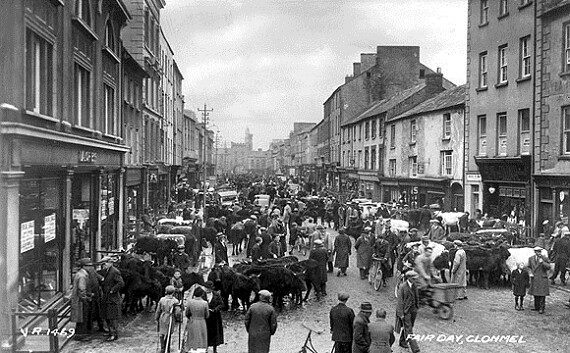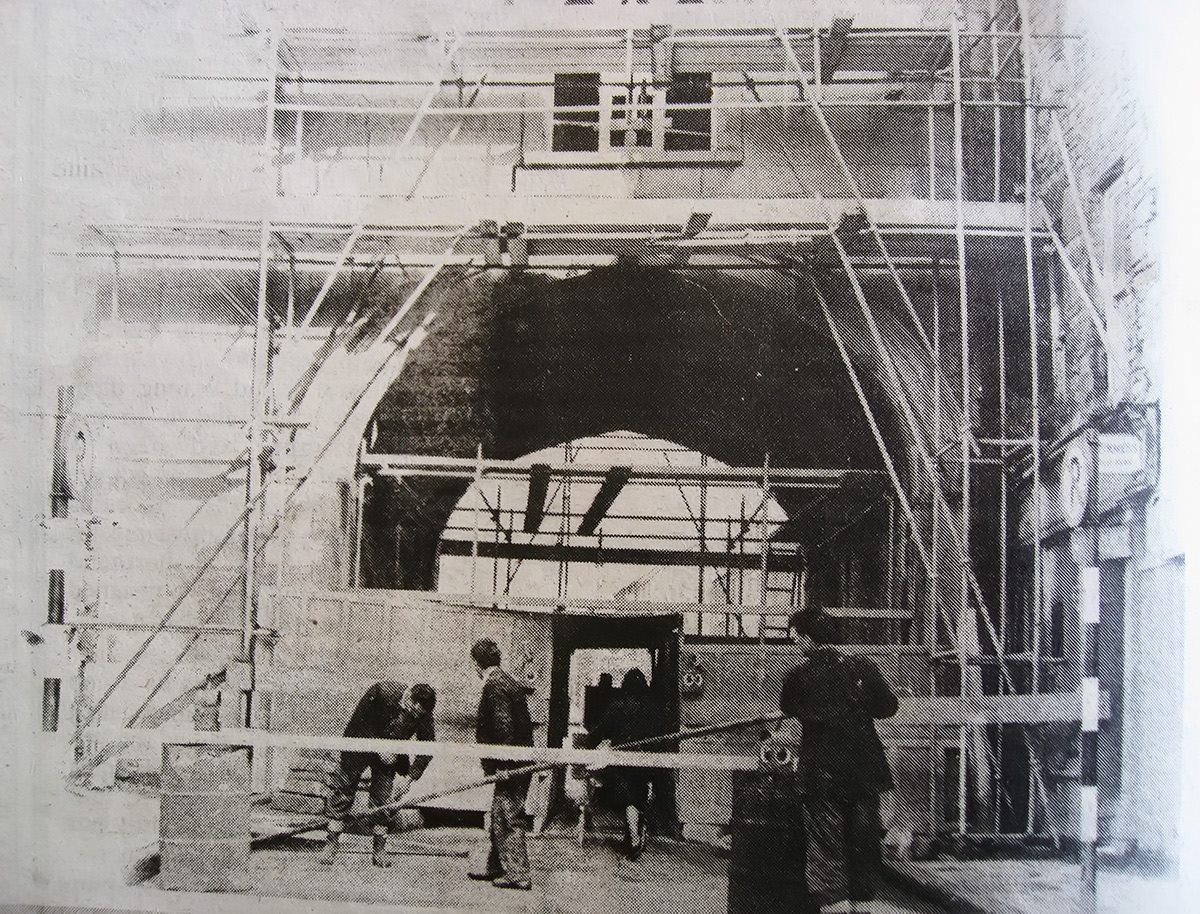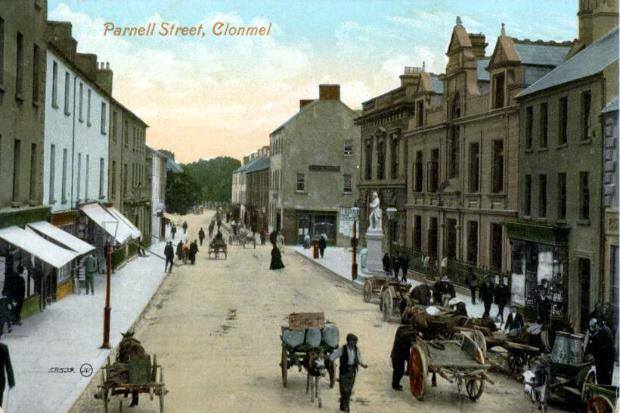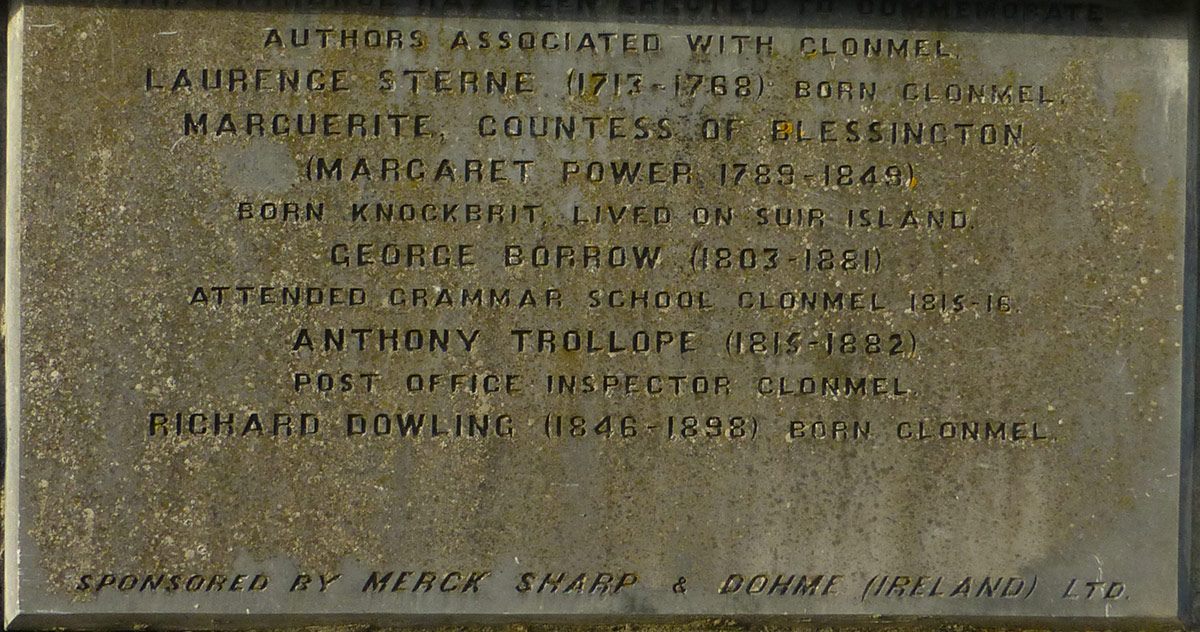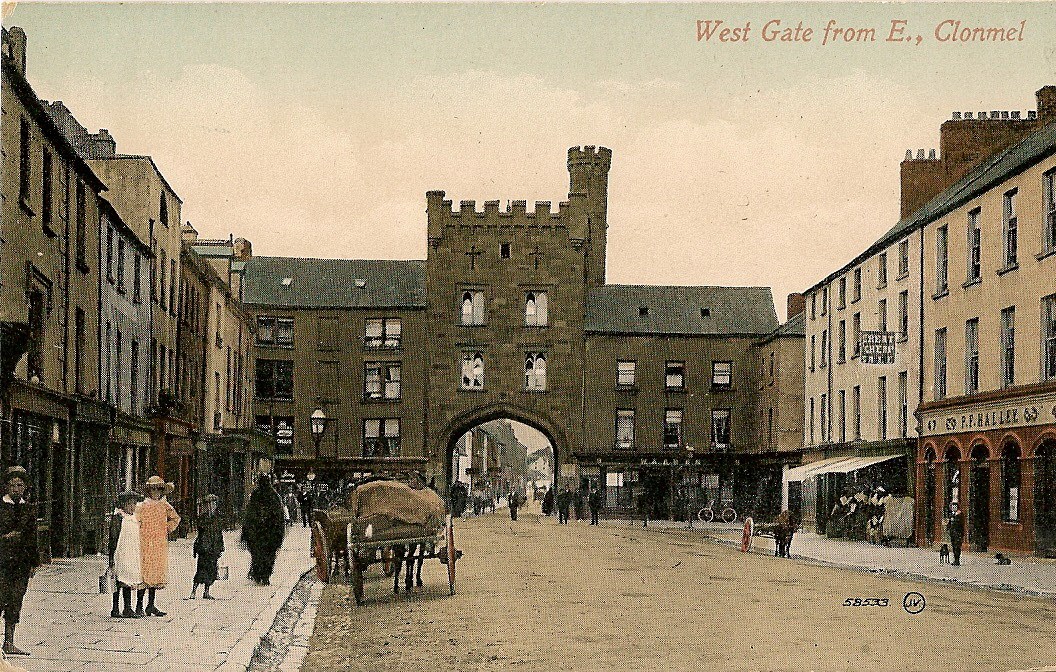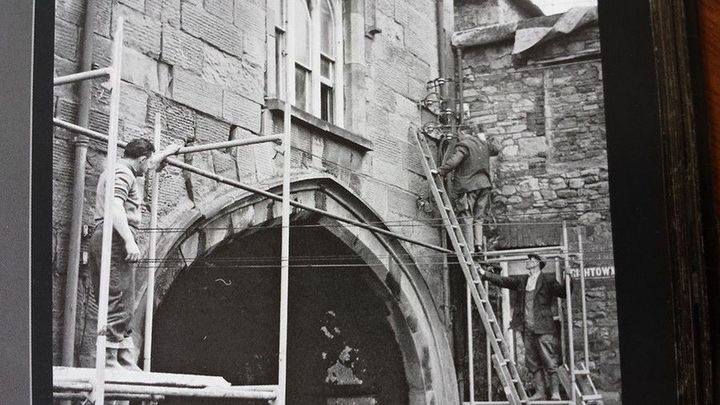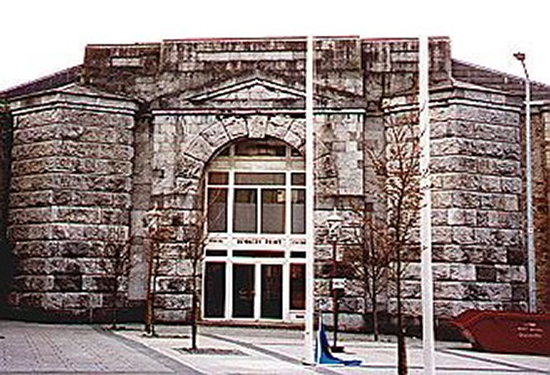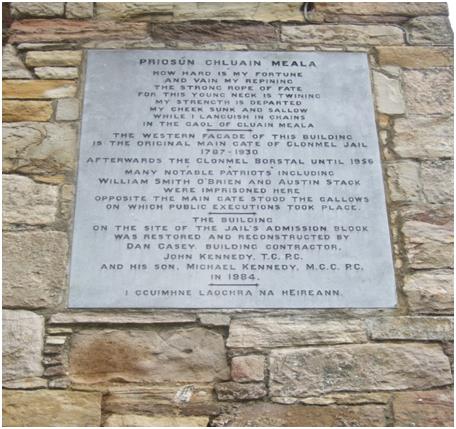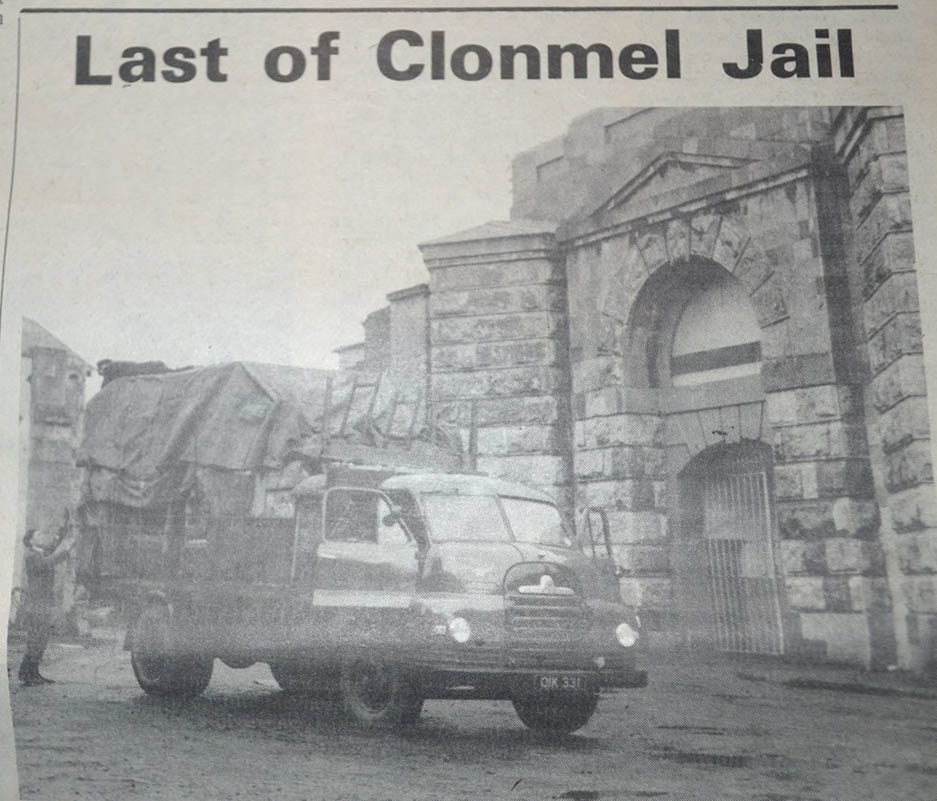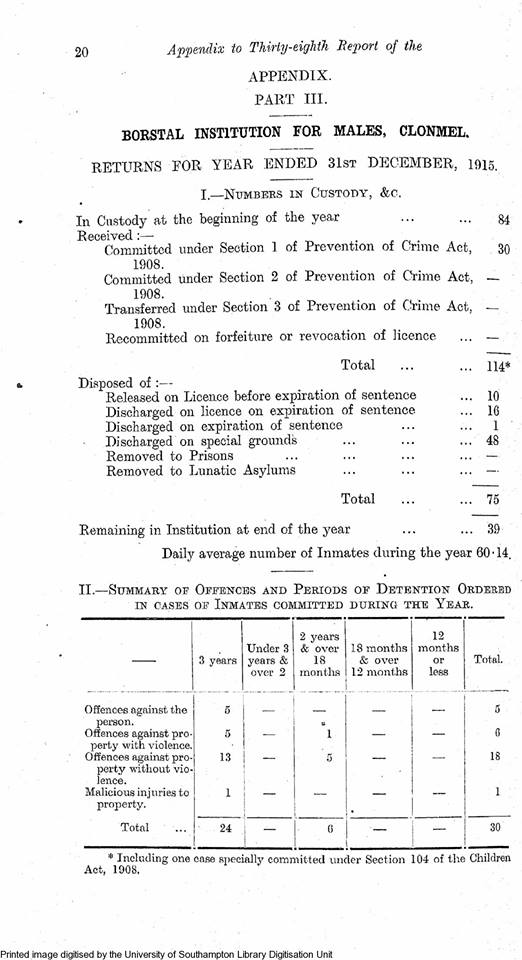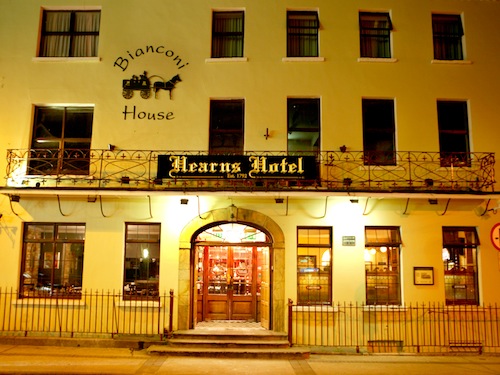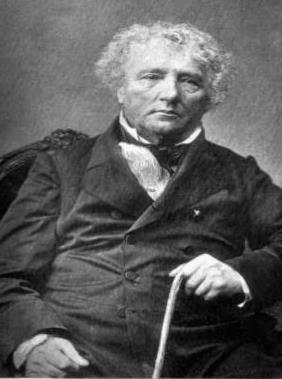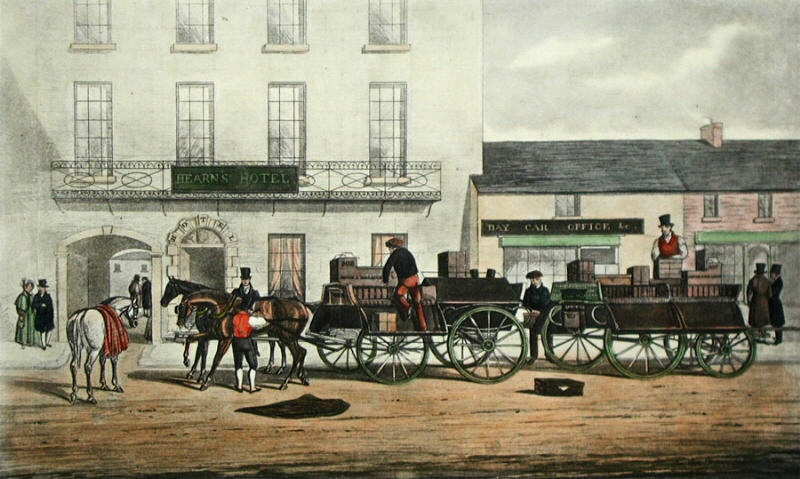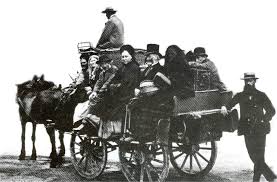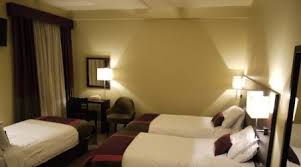The Main Guard
As its name suggests, it was here that the main guard of the town troops for Clonmel were once stationed. During the siege of Clonmel in 1650 the old Manor Court was destroyed, and after the restoration of the Duke of Ormond's palatinate rights in 1662 he ordered the building of a new courthouse. It was completed in 1674. The rumour abounds that Christopher Wren designed the Main Guard, but no evidence exists to support this claim. The building's most striking features are its five semi-circular arches and a handsome clock and bell tower. On the west wall can be seen two coats of arms: those of the Borough of Clonmel and those of the Ormond family, both bearing the date 1675. In recent years the Main Guard has undergone substantial renovation by the Office of Public Works, who have brought the building back to its original 17th Century design. The Main Guard is open to visitors from March to late October.
Daingean an Phríomhgharda
Mar is léir ón ainm, is anseo a bhíodh príomhgharda thrúpaí baile Chluain Meala tráth dá raibh. Scriosadh seana-Chúirt an Mháinéara in 1650 le linn léigear Chluain Meala. Tar éis gur athbhunaíodh cearta pailitíneacha Diúic Urmhumhan in 1662, d’ordaigh sé tigh cúirte nua a thógaint. Críochnaíodh an obair sin in 1674. Ráfla coiteann é gurbh é Christopher Wren a dhear Daingean an Phríomhgharda, ach níl aon fhianaise air. ’Siad na gnéithe is suaithinsí den bhfoirgneamh na cúig cinn d’áirsí leathchiorclacha agus an clog breá ar an dtúr. Tá dhá armas le feiscint ar an bhfalla thiar: armas Bhuirg Chluain Meala agus armas na n Urmhumhnach, 1675 mar dháta ar an dá cheann acu. Dhein Oifig na nOibreacha Poiblí athnuachaint mhór ar Dhaingean an Phríomhgharda le blianta beaga anuas agus é cóirithe anois mar a bhíodh ar dtúis sa seachtú haois déag. Bíonn Daingean an Phríomhgharda ar oscailt do chuairteoirí ó Mhárta go dtí go déanach i nDeireadh Fómhair.
La Guardia Principal
Como su propio nombre indica, fue aquí donde la guardia principal de las tropas del pueblo en Clonmel fue tiempo atrás estacionada. Durante el asedio de Clonmel en 1650, la antigua Corte Manor fue destruida, y después de la restauración de los derechos palatinos del Duque de Ormond en 1662, se ordenó la construcción de un nuevo palacio de justicia. Este fue terminado en 1674. Según los rumores Christopher Wren diseñó la Guardia Principal, pero no existe ninguna evidencia que apoye esta afirmación. Entre las características más llamativas del edificio encontramos sus cinco arcos de medio punto, un reloj y el campanario de la torre. En la pared oeste se pueden ver dos escudos de armas: las del término municipal de Clonmel y los de la familia de Ormond, ambos marcados con la fecha de 1675. En los últimos años la Guardia principal ha sido objeto de una renovación sustancial por la Oficina de Obras Públicas, que trabajan por devolverle al edificio su diseño original del siglo 17. La Guardia principal está abierta al público desde marzo hasta finales de octubre.
De Main Guard
Zoals de naam doet vermoeden, was het hier waar de belangrijkste troepen van Clonmel ooit werden gestationeerd. Tijdens de belegering van Clonmel in 1650 werd het oude Manor Court (Een gerechtsgebouw) vernietigd en na de restauratie van de hertog van Ormond's palatinaat rechten in 1662 beval hij de bouw van een nieuw gerechtsgebouw. Het werd in 1674 voltooid en het gerucht gaat dat Christopher Wren het nieuwe gebouw van de Main Guard ontworpen heeft. Hier is echter nooit bewijs voor gevonden.
La Garde principale
Comme ce nom nous indique, c’est ici où la principale garde des troupes de la ville ont été stationné. Pendant le siège de Clonmel en 1650 l'ancienne Cour de Manoir a été détruit. Après la restauration des droits de Palatinat du duc d’Ormond en 1662, la construction d'un nouveau palais de justice a commencé. Il a été fini en 1674. Il y a une rumeur que Christopher Wren a conçu la garde principal, mais aucune preuve n’existe pour étayer cette allégation. Les Caractéristiques les plus frappantes du bâtiment sont l'édifice avec ses cinq arcs en plein cintre, une tour horloge et le clocher. Sur le mur de l'ouest on peut voir deux blasons, avec une origine de l'arrondissement de Clonmel et de la famille Ormond, qui portent la date 1675.Il y avait des rénovations sur la Garde Principale depuis quelques années grâce au Bureau des Travaux publics. Qui on a restauré l'édifice à sa conception originale du 17ème siècle. La Garde principale est ouverte au tout public de Mars à fin Octobre.
La Main Guard
Come il nome suggerisce, era qui che la guardia principale delle truppe della città di Clonmel era una volta appostata. Durante l’assedio di Clonmel nel 1650 la vecchia Manor Court fu distrutta, e dopo la restaurazione dei diritti palatinati del Duca di Ormond nel 1662, egli ordinò la costruzione di un nuovo palazzo di giustizia. Fu completata nel 1674. Corrono voci che Christopher Wren progettò la Main Guard, ma non esistono prove a supporto di questa affermazione. Le caratteristiche più affascinanti dell’edificio sono nei suoi cinque archi semi-circolari e un bellissimo orologio e campanile. Sul muro occidentale si possono vedere due stemmi: quello del Borgo di Clonmel e quello della famiglia Ormond, entrambi portano la date del 1675. In anni recenti la Main Guard ha subito un rinnovamento sostanziale da parte dell’ufficio dei lavori pubblici, che ha riportato l’edificio al suo originale aspetto del XVII secolo. La Main Guard è aperta ai visitatori da Marzo a tardo Ottobre.
주요 방어 시스템
이름에서 말해주듯이, 이 곳은 Clonmel 의 타운 부대의 주요 방어 시스템으로 자리 잡아있었다. the old Manor Court가 무너졌던 1650년에 Clonmel 이 포위 되었던 때와 그 후 Duke of Ormond’s palatinate right 을 반환 한 1662년에 그는 법원의 새로운 건물을 짓기를 명령하였다. 공사는 1674년에 완공되었다. Christopher Wren 이 main guard 를 설계했다는 루머가 돌았지만 이러한 주장을 뒷받침 하기 위한 근거는 없었다. 이 건물의 가장 두드러진 특징은 다섯개의 반원형 아치와 멋있는 시계와 종탑이다. 서쪽 벽에서는 두 개의 문장이 보인다 : Borough of Clonmel과 Ormond family의 것이며 둘 다 1675년 까지 그 역할을 하였다. 최근에 office of public works 에 의해서 상당한 보수를 거쳤으며 17세기의 원래의 디자인으로 돌아갔다. 이 건물은 3월부터 10월 말까지 방문객들에게 열려있다.
Straż Główna
Jak wskazuje nazwa, to właśnie tutaj mieściła się kiedyś główna straż wojska miejskiego w Clonmel. Podczas oblężenia Clonmel w roku 1650, dawny sąd dworowy został zniszczony, i po odnowieniu praw palatyńskich księcia Ormond w 1662 roku, nakazał budowę nowego budynku. Budowa została zakończona w roku 1674. Istnieją przypuszczenia iż Christopher Wren zaprojektował Straż Główną, jednak nie ma dowodów które by potwierdzały tę teorię. Budynek ten charakteryzuje się pięcioma półkolnymi łukami jak również i okazałym zegarem i wieżą dzwonniczą. Po stronie zachodniej można ujrzeć dwa herby rodowe: herb Gminy Clonmel i rodziny Ormond, obydwa z 1675 roku. Ostatnio, Straż Główna została odnowiona przez Urząd Robót Publicznych, który przywrócił budynek do oryginalnego wyglądu z XVII wieku. Straż Główna jest otwarta dla zwiedzających od marca do późnego października.
